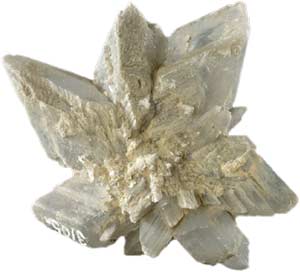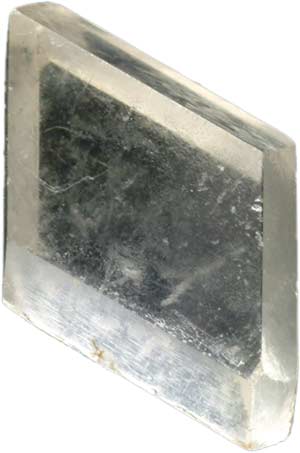Gypsum
Gypsum has a very low thermal conductivity (hence its use as an insulating filler). A crystal of gypsum will feel noticeably warmer than, for instance, a crystal of quartz. Gypsum is one of the more common minerals in sedimentary environments. It is a major rock forming mineral that produces massive beds, usually from precipitation out of highly saline waters.

gypsum (rosette) |
Chemical composition - CaSO
4-2(H
2O)
Other specimens - Click the thumbnails to enlarge 


|


